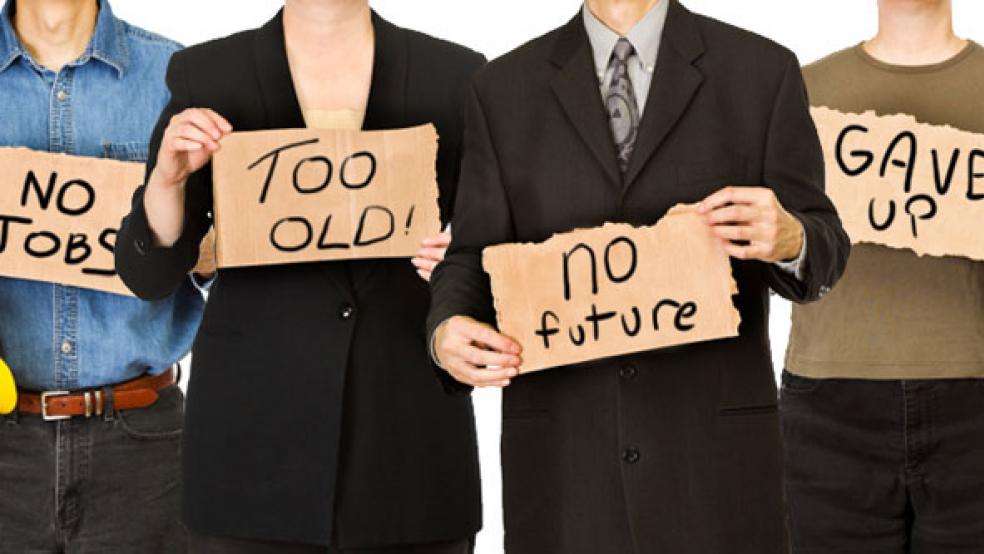It’s the time of year when analysts and pundits begin “marking their beliefs to market” – telling us what they got right or wrong in the previous year. In that spirit, here are some of the things I got wrong about the Great Recession:
It’s Hard to Change the Inflation Rate in a Deep Recession: Prior to the Great Recession, I thought central banks could create inflation pretty much at will, even in a deep recession. All that was needed was to crank up the printing press, get the money into the hands of people who will spend it, and the extra demand will drive up the prices of goods and services. At the same time, inflationary expectations would increase driving down the real interest rate, and that would increase demand even more. If the increase in the money supply is sufficiently large, inflation would be the inevitable result.
Related: The Latest Inflation Worry Is, As Usual, Overblown
But the Fed doesn’t create money directly, it increases bank reserves and it’s possible for those reserves to get stuck in bank vaults or in deposits held at the Fed. When that happens, the money supply doesn’t increase – balances held within the Federal Reserve System are not part of the money supply – and the desired increase in demand doesn’t occur.
The lesson for me is that if you want the inflation rate to increase, demand has to increase. That requires more than simply creating a bunch of reserves that sit idle in banks.
Don’t Depend upon Fiscal Policy: Which brings me to the second lesson. If monetary policy alone cannot turn things around when the economy is spiraling downward, it’s up to fiscal policy to come to the rescue. Increases in spending combined with targeted tax cuts can make a big difference in how quickly the economy recovers.
Prior to the recession, I never would have dreamed that Congress would all but turn its back on the unemployed, let alone turn to austerity, but that’s exactly what happened. Yes, there was a stimulus package just after Obama was first elected, but it was far from sufficient and more was needed to help the millions and millions of households struggling to make ends meet in the face of unemployment or reduced hours. Instead, we got budget cuts that made the problem even worse.
Related: Why Wall Street Breeds So Many Bad Apples
Recessions Affect Long-Run Growth: Prior to the Great Recession, many economists – myself included – believed that monetary and fiscal policy would have no impact on the full employment or natural level of output in the long-run. Policy could change the severity and duration of a recession; these actions were thought to be completely independent of our long-run productive potential.
The experience of the Great Recession shows that this is wrong. First, long-term unemployment has been a huge and persistent problem, and many workers have responded by dropping out of the labor force permanently. The decrease in the workforce lowers our potential output level. Second, public investment in infrastructure has fallen behind, and that hurts our long-run growth potential. Third, teachers and social services have been cut, and to the extent that our children are less educated, less healthy, less well-adjusted because of these cuts in the name of austerity, our long-run potential will fall.
The lesson is an important one, and it was emphasized recently by researchers at the Federal Reserve. As they note, “For policymakers, the results also point to the cost of recessions, especially deep and long ones, and provide a rationale for strong and rapid policy responses to economic downturns.”
The next time a recession hits, we should err on the side of doing too much, and do it as soon as possible, instead of dragging our feet and not doing enough like we did this time, and in some cases making the recession even worse.
Related: Why American Entrepreneurship Has Been Dying for Decades
The Cure Depends upon the Disease: When teaching monetary and fiscal policy in a classroom setting, the policies are generic. If demand falls, policymakers should cut interest rates, increase government spending, and/or cut taxes and the problem is solved instantly. Exactly what the money is spent on and whose taxes are cut is left unspecified. But in real world applications, it’s much more complicated, something I didn’t fully understand when the recession hit.
Recessions have a variety of causes, for example spikes in oil prices as in the 1970s, Fed induced increases in the interest rate to fight inflation as in the Volcker era, housing price bubbles and financial meltdowns as in the Great Recession, and so on. The Great Recession was a “balance sheet recession” meaning that one of the big problems was that bank and financial balance sheets were wiped out as housing and asset prices plunged.
One of the biggest mistakes we made in fighting the recession was the failure to target and repair household balance sheets. Bank balance sheets were restored, but household balance sheets were left in shambles. The result is that the economy has suffered as households have used their paychecks to restore what has been lost, and pay off debt instead of consuming goods and services.
In the future, we must do a better job of targeting the problem that is causing the economy to function poorly.
It isn’t easy to admit mistakes, especially when they look so obvious in retrospect. But the alternative to admitting and learning from mistakes is to cling to incorrect beliefs and risk repeating the errors. After all, there are plenty of new mistakes to be made, and I’m sure I’ll make my share.
Top Reads from The Fiscal Times:




